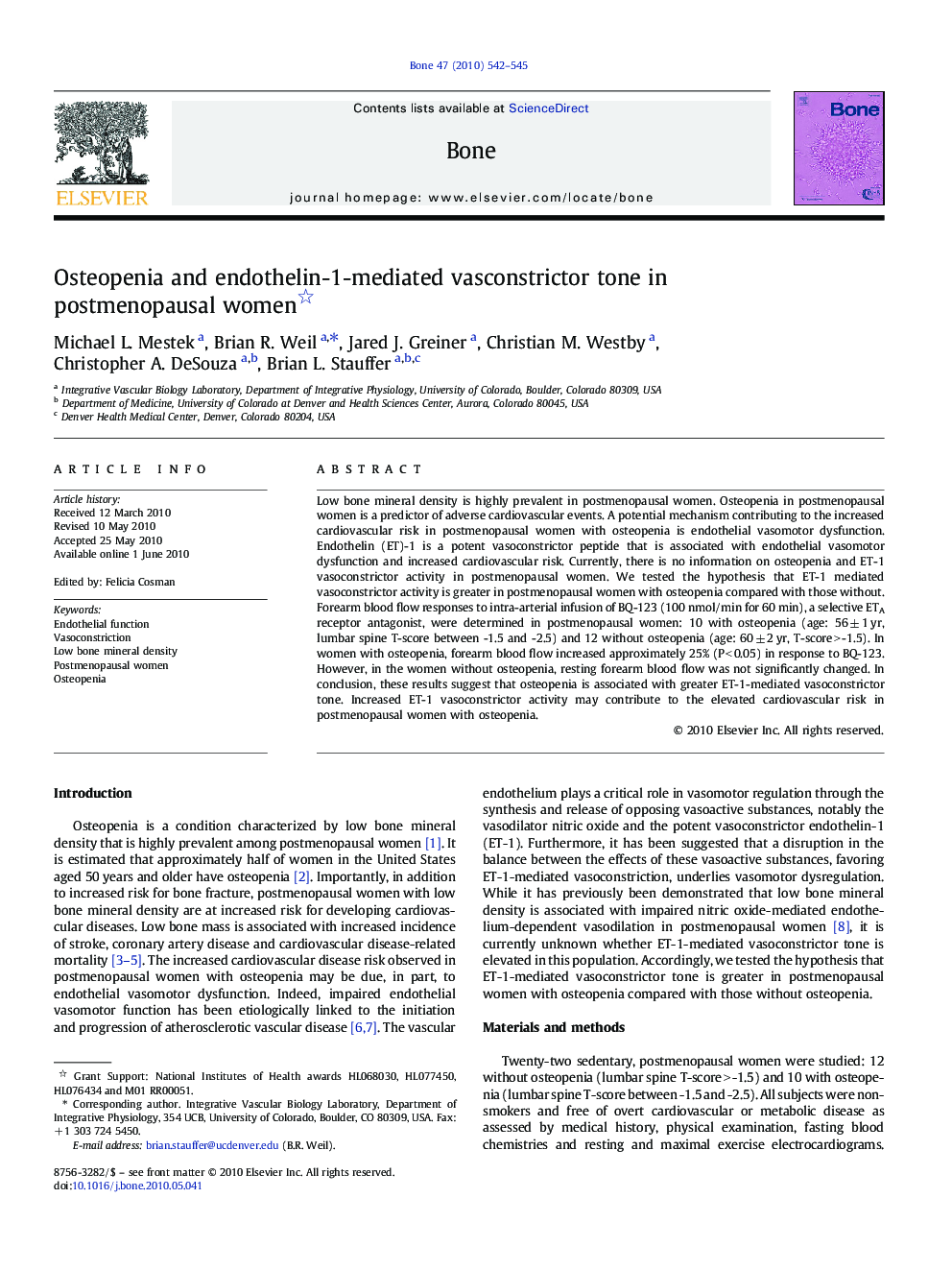| Article ID | Journal | Published Year | Pages | File Type |
|---|---|---|---|---|
| 2780613 | Bone | 2010 | 4 Pages |
Low bone mineral density is highly prevalent in postmenopausal women. Osteopenia in postmenopausal women is a predictor of adverse cardiovascular events. A potential mechanism contributing to the increased cardiovascular risk in postmenopausal women with osteopenia is endothelial vasomotor dysfunction. Endothelin (ET)-1 is a potent vasoconstrictor peptide that is associated with endothelial vasomotor dysfunction and increased cardiovascular risk. Currently, there is no information on osteopenia and ET-1 vasoconstrictor activity in postmenopausal women. We tested the hypothesis that ET-1 mediated vasoconstrictor activity is greater in postmenopausal women with osteopenia compared with those without. Forearm blood flow responses to intra-arterial infusion of BQ-123 (100 nmol/min for 60 min), a selective ETA receptor antagonist, were determined in postmenopausal women: 10 with osteopenia (age: 56 ± 1 yr, lumbar spine T-score between -1.5 and -2.5) and 12 without osteopenia (age: 60 ± 2 yr, T-score > -1.5). In women with osteopenia, forearm blood flow increased approximately 25% (P < 0.05) in response to BQ-123. However, in the women without osteopenia, resting forearm blood flow was not significantly changed. In conclusion, these results suggest that osteopenia is associated with greater ET-1-mediated vasoconstrictor tone. Increased ET-1 vasoconstrictor activity may contribute to the elevated cardiovascular risk in postmenopausal women with osteopenia.
